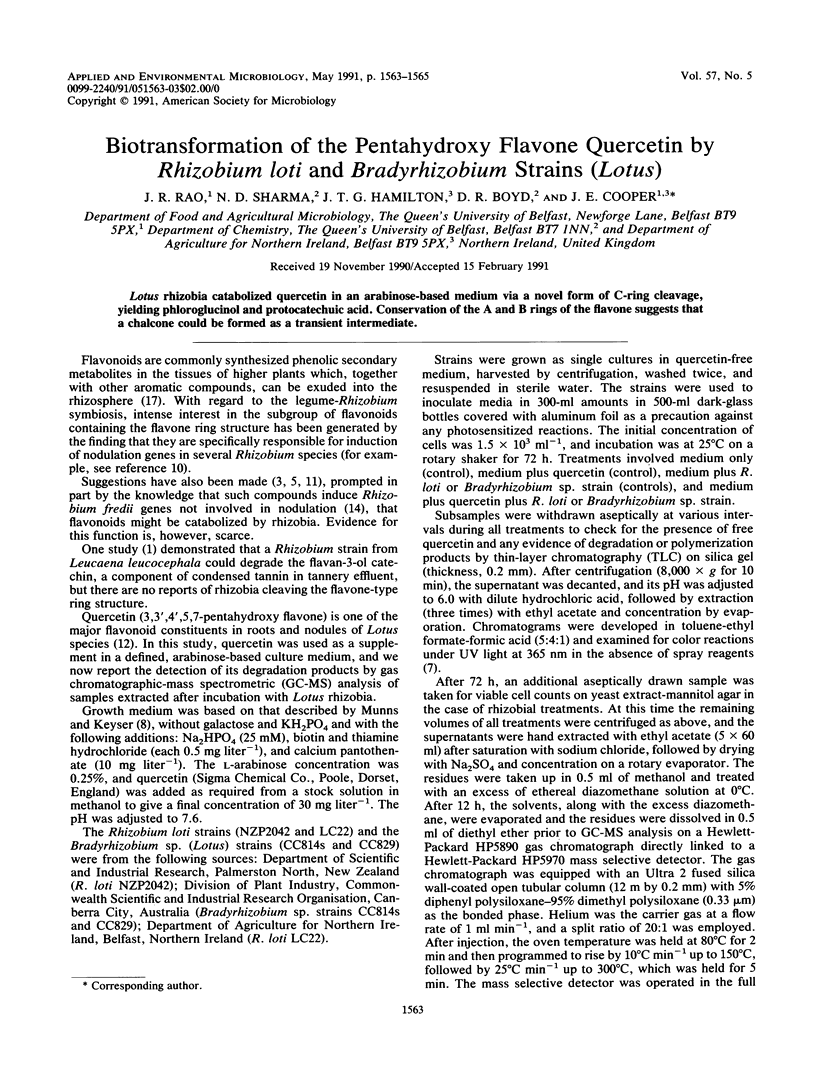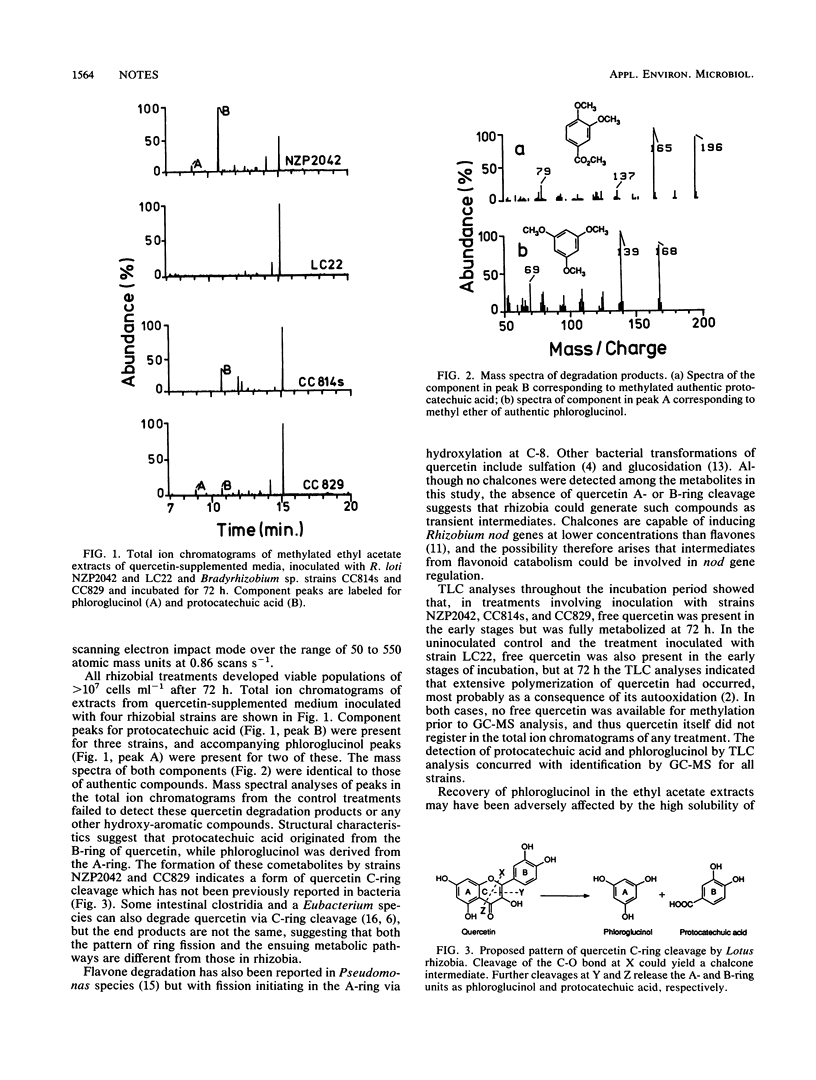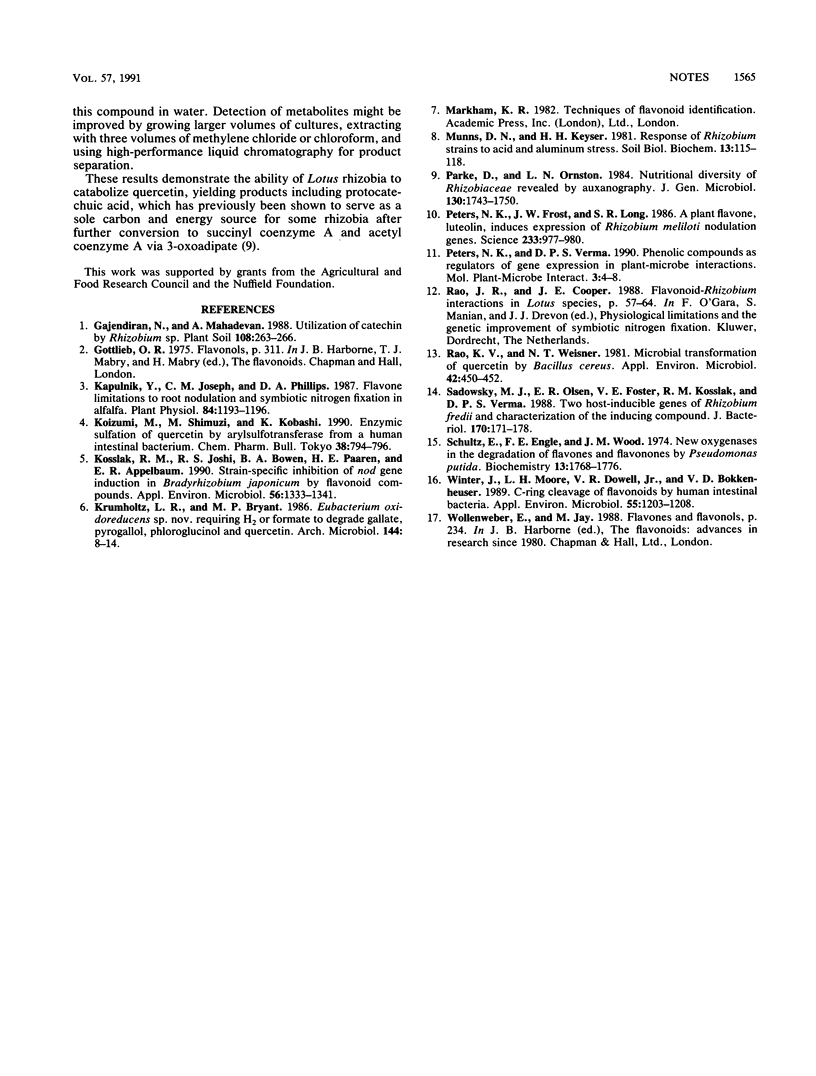Abstract
Lotus rhizobia catabolized quercetin in an arabinose-based medium via a novel form of C-ring cleavage, yielding phloroglucinol and protocatechuic acid. Conservation of the A and B rings of the flavone suggests that a chalcone could be formed as a transient intermediate.
Full text
PDF


Selected References
These references are in PubMed. This may not be the complete list of references from this article.
- Kapulnik Y., Joseph C. M., Phillips D. A. Flavone limitations to root nodulation and symbiotic nitrogen fixation in alfalfa. Plant Physiol. 1987 Aug;84(4):1193–1196. doi: 10.1104/pp.84.4.1193. [DOI] [PMC free article] [PubMed] [Google Scholar]
- Koizumi M., Shimizu M., Kobashi K. Enzymatic sulfation of quercetin by arylsulfotransferase from a human intestinal bacterium. Chem Pharm Bull (Tokyo) 1990 Mar;38(3):794–796. doi: 10.1248/cpb.38.794. [DOI] [PubMed] [Google Scholar]
- Kosslak R. M., Joshi R. S., Bowen B. A., Paaren H. E., Appelbaum E. R. Strain-Specific Inhibition of nod Gene Induction in Bradyrhizobium japonicum by Flavonoid Compounds. Appl Environ Microbiol. 1990 May;56(5):1333–1341. doi: 10.1128/aem.56.5.1333-1341.1990. [DOI] [PMC free article] [PubMed] [Google Scholar]
- Peters N. K., Frost J. W., Long S. R. A plant flavone, luteolin, induces expression of Rhizobium meliloti nodulation genes. Science. 1986 Aug 29;233(4767):977–980. doi: 10.1126/science.3738520. [DOI] [PubMed] [Google Scholar]
- Peters N. K., Verma D. P. Phenolic compounds as regulators of gene expression in plant-microbe relations. Mol Plant Microbe Interact. 1990 Jan-Feb;3(1):4–8. doi: 10.1094/mpmi-3-004. [DOI] [PubMed] [Google Scholar]
- Rao K. V., Weisner N. T. Microbial Transformation of Quercetin by Bacillus cereus. Appl Environ Microbiol. 1981 Sep;42(3):450–452. doi: 10.1128/aem.42.3.450-452.1981. [DOI] [PMC free article] [PubMed] [Google Scholar]
- Sadowsky M. J., Olson E. R., Foster V. E., Kosslak R. M., Verma D. P. Two host-inducible genes of Rhizobium fredii and characterization of the inducing compound. J Bacteriol. 1988 Jan;170(1):171–178. doi: 10.1128/jb.170.1.171-178.1988. [DOI] [PMC free article] [PubMed] [Google Scholar]
- Schultz E., Engle F. E., Wood J. M. New oxygenases in the degradation of flavones and flavanones by Pseudomonas putida. Biochemistry. 1974 Apr 9;13(8):1768–1776. doi: 10.1021/bi00705a033. [DOI] [PubMed] [Google Scholar]
- Winter J., Moore L. H., Dowell V. R., Jr, Bokkenheuser V. D. C-ring cleavage of flavonoids by human intestinal bacteria. Appl Environ Microbiol. 1989 May;55(5):1203–1208. doi: 10.1128/aem.55.5.1203-1208.1989. [DOI] [PMC free article] [PubMed] [Google Scholar]


